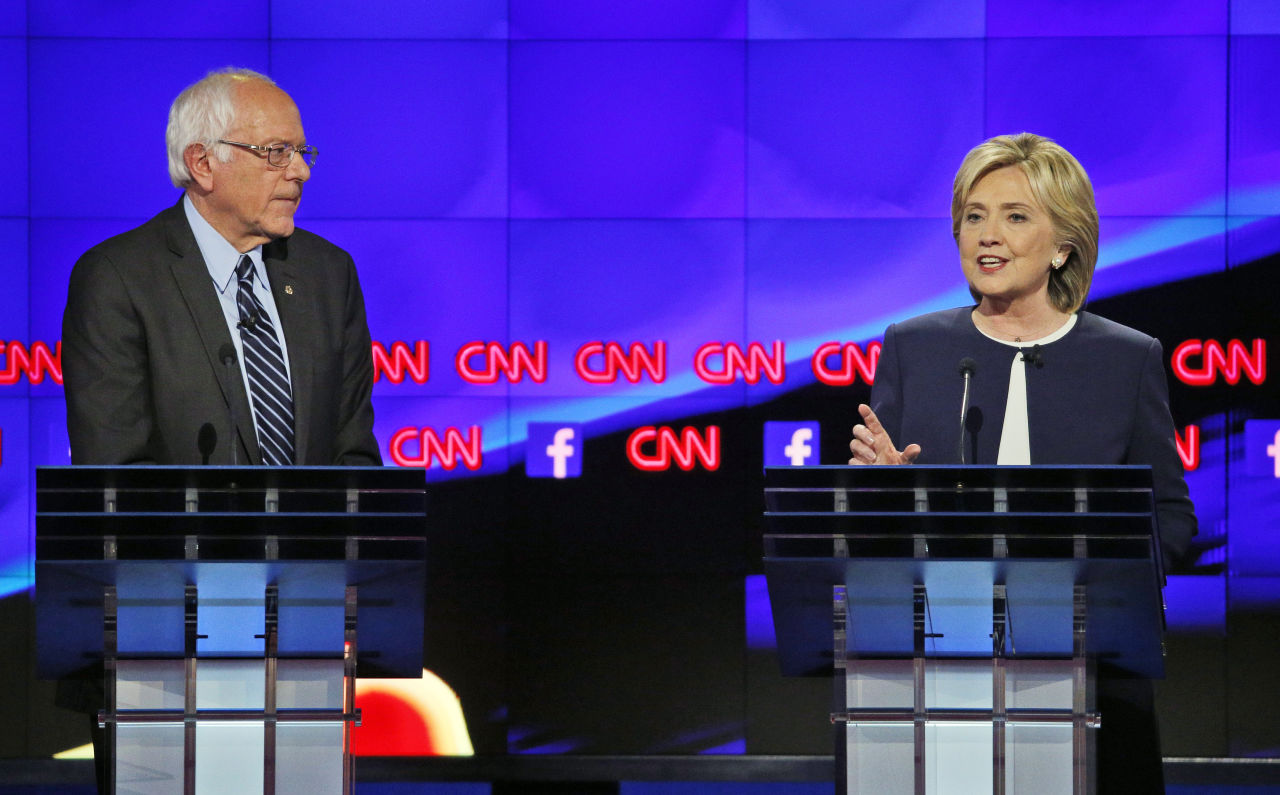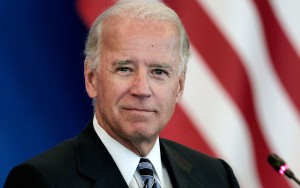
Democratic presidential primary gets real
The U.S. presidential primary race is getting interesting — perhaps more interesting than it has been for the past 80 years or so. I’m talking about the Democratic primary, although the Republican side is usually interesting in its own special way. Beltway pundits are beginning to think that Bernie Sanders has a good shot at the nomination. And it may be even better than they think.
A New York Times/CBS poll released late Wednesday showed Hillary Clinton leading Sanders, 48 to 41 percent — down from a 20 point lead a month ago. Sanders showed a nearly 2-to-1 lead among voters under 45 years old. A Monmouth University poll released on Jan. 12 showed Sanders ahead of Clinton in New Hampshire by 14 percentage points (53 to 39). A Quinnipiac poll released the same day showed Sanders erased Clinton’s lead in Iowa and was ahead by 5 percentage points.
On the standard political story, victories in Iowa and New Hampshire could provide momentum for Sanders and change the dynamics of the race. But the way in which this happens is also important for understanding the present situation. The Iowa caucuses will be held on Feb. 1, just 18 days from now. New Hampshire Democrats will vote on Feb. 9. The voters in these contests are the ones who have been paying the most attention to the candidates and to the issues. And Sanders is leading in both of them. This means that the national polls, which still show Clinton in the lead, may be skewed by the lack of engagement of these voters. The numbers could change quickly once people get to know a little bit more about Clinton’s challenger.
This is what happened in 2008, when a freshman senator from Illinois named Barack Obama scored an upset victory against Clinton, whose nomination had been considered inevitable. In fact, two and a half weeks before the Iowa caucuses — which is where we are now, Obama was trailing Clinton by 6 points there and was about even in New Hampshire. And he was down by as much as 29 points to her nationally.
And at that time in the 2008 presidential primary race, Obama was not quite even with Clinton in South Carolina. But after he won Iowa and voters got a closer look at him, he beat Clinton there by 29 percentage points.
History could repeat itself, and it is clear from Clinton’s escalating criticisms of Sanders that she is worried about it. Another hefty chunk of déjà vu: MoveOn.org, one of the most powerful Internet grass-roots forces in the Democratic primary — or the country, for that matter — voted overwhelming on Sunday to endorse Bernie Sanders. MoveOn was a key player in the 2008 primary and mobilized tens of thousands of volunteers as well as money for Obama. With its endorsement this week, it has pledged to organize its 43,000 members in Iowa and 30,000 in New Hampshire. This could easily make the difference in Iowa, where 239,000 votes were cast in the 2008 caucuses (a record turnout).
There are a lot of barriers built into our political system to make sure that a candidate like Sanders cannot make it to the presidency. He is proposing economic and institutional reforms further reaching than anything since the New Deal that would redistribute income and help democratize political power — breaking up the big banks, increasing the income and bargaining power of labor, taxes on Wall Street and the rich, campaign finance reform, single-payer health care and even reform of the most important and often unaccountable economic policymaking body in the country, the Federal Reserve. But some of the barriers to a candidate of this type have been breaking down. Sanders was able to raise $73 million in 2015, with an average donation of just $27 and without corporate money. And the Internet and social media provide alternative, nonmonopolizable means of communication and some limited check on the major media.
In response to Sanders’ challenge, Clinton has moved considerably leftward on a number of economic issues. Political satirist Andy Borowitz of the New Yorker summed it up last April in one of his typical spoofs, titled “Hillary expected to adopt all of Sanders’ positions by noon.” This week she proposed a 4 percent surcharge on annual incomes over $5 million. She also advocated expanding the coverage and increasing the rate of the estate tax and closing some loopholes for rich taxpayers.

On Monday, Vice President Joe Biden praised Sanders for his “deep and real” yearning, “credibility” and “authenticity” on the issue of reducing income inequality, adding that “it’s relatively new for Hillary to talk about that.” These sentiments have been bubbling up from the party base. If two candidates say that they are going to stand up to the corporations and billionaires that have pushed inequality to levels not seen for a century and one is getting millions of dollars from them while the other gets nothing, this is something that voters are going to take into account.
David Axelrod, who was Obama’s chief campaign strategist and then senior adviser when he was president, criticized Chelsea Clinton this week for her attacks on Sanders, saying that they were “not honest.”
These statements from Biden and Axelrod indicate that Clinton’s support at high levels, not only at the base, could also be eroding as her polling numbers slip.
Despite all the rigged rules and concentration of income and power that Sanders rails against — and these are huge and have increased enormously since 1980 — he has a serious shot at the top job. (Polls also show Sanders beating Donald Trump by a significant margin.) There are a number of historically specific events that led to this possibility, and it is not necessarily something that happens more than once or twice in 80 years. But it’s for real. Anyone who thinks that such things are not possible needs to rethink their understanding of the U.S. political system.
(From AlJazeera America)


